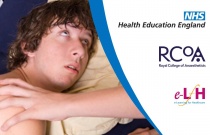Non-steroidal Anti-inflammatory Drugs
Emma Graham-Clarke
0.50 Hours
This session describes the pharmacology of non-steroidal anti-inflammatory drugs and their clinical uses as analgesics.
Introduction to Musculoskeletal Injuries and Assessment
Joe Francis
0.50 Hours
This session aims to outline the fundamental elements of history taking and systematic physical assessment in the context of musculoskeletal (MSK) presentations in the out-of-hospital environment.
Elbow Injuries
Sean Mower
0.50 Hours
An effective advanced assessment of an elbow injury will allow a paramedic to determine a management plan that leads to the most appropriate and suitable management. This session aims to provide the underlying theory and techniques to carry out these assessments effectively.
Minor Head Injury
College of Paramedics
This session aims to develop a foundational underpinning knowledge surrounding history taking, physical assessment and management of patients presenting with minor head injuries in the out-of-hospital environment. Anatomy and physiology, history taking and physical assessment will be discussed, alongside case studies to contextu....
Management of Oronasal Fistula Following Cleft Palate Repair
Haitham Khashaba and Nigel Mercer
0.50 Hours
This session will describe the indications for the repair of oronasal fistulae and explore the surgical and non-surgical management techniques that are currently available.
Embryology and Development of the Male Genitalia
Michelle Collins and John Palmer
0.50 Hours
This session describes the embryonic origins of the male genitalia, highlighting the embryological development of the key structures and explaining the changes which take place to the male genitalia at puberty.
Basic Stroke
Joanna Wardlaw
0.50 Hours
This session describes the clinical features of stroke and how and when imaging is used. The different appearances over time on both computed tomography (CT) and magnetic resonance imaging (MRI) are covered, along with important very early signs of infarction on CT. The differential diagnosis of patients presenting with stroke-l....
Management of Seizures
Anthony Absalom and Dinesh Nethirasigamani
0.50 Hours
This session gives an overview of the emergency and early management of seizures.
Mesenteric Ischemia: Pathogenesis and Challenging Diagnostic and Therapeutic Modalities
Aikaterini Mastoraki, Sotiria Mastoraki, Evgenia Tziava, Stavroula Touloumi, Nikolaos Krinos, Nikola
0.50 Hours
Mesenteric ischemia (MI) is an uncommon medical condition with high mortality rates. ΜΙ includes inadequate blood supply, inflammatory injury and eventually necrosis of the bowel wall.
General Surgery: Gastrointestinal Haemorrhage - Upper
Amandine Woodham and Cynthia-M Borg
0.25 Hours
Upper gastro-intestinal bleeding is a common and sometimes life threatening problem. This session discusses the symptoms, causes, resuscitation, scoring and further management of these patients.
How to Approach Thrombocytopenia
Roberto Stasi
0.50 Hours
Thrombocytopenia is a common hematologic finding with variable clinical expression. A low platelet count may be the initial manifestation of infections such as HIV and hepatitis C virus or it may reflect the activity of life-threatening disorders such as the thrombotic microangiopathies. A correct identification of the causes of....
Idiopathic Pulmonary Fibrosis Acute Exacerbations--Unravelling Ariadne's Thread
Spyros A Papiris, Effrosyni D Manali, Likurgos Kolilekas, Konstantinos Kagouridis, Christina Trianta
0.50 Hours
Idiopathic pulmonary fibrosis (IPF) is a dreadful, chronic, and irreversibly progressive fibrosing disease leading to death in all patients affected, and IPF acute exacerbations constitute the most devastating complication during its clinical course.
General Principles of Poisoning
Fran O´Higgins
0.50 Hours
This session outlines the basic management of the patient who has been exposed to poisons. It reviews the important points of patient history taking and examination as well as the general principles of management.
Great Vessels, Main Peripheral Arteries and Veins
Kirti Mukherjee
0.50 Hours
This session describes the four sets of great vessels originating or terminating in the heart, along with their major branches and tributaries in the thorax, abdomen and limbs.
Landmarks for Tracheostomy and Cricothyrotomy
Campbell Edmondson
0.50 Hours
The session outlines how the anatomical landmarks necessary to perform either cricothyrotomy or tracheostomy can be correctly identified. The differences between the two techniques are highlighted.
Co2 Carriage in Blood and Acid-Base Equilibrium
Andy Lumb
0.50 Hours
This session covers the physiology of how carbon dioxide is carried by blood, including its conversion into bicarbonate ions and the role of the red blood cell and haemoglobin in this process. The session also describes how buffers work, and the fundamentals of acid-base balance under both physiological and pathological circumst....
Functions of Nerve Cells 1
Lesley Bromley
0.50 Hours
This session describes the physiology of the action potential, and how it is generated and conducted along nerves.
Metabolic Pathways
Elizabeth Duff
0.50 Hours
This session provides an overview of the basic metabolic pathways and metabolic reactions. It also explains how the body produces and stores energy obtained from the main fuel sources — carbohydrates, proteins and fats.
Materno-fetal Circulation Changes At Birth
Mary Mushambi
0.50 Hours
This session will explain fetal circulation and the changes which occur at birth.
Drugs as Organic Molecules
Dr Mary E Stocker MA, MBChB, FRCA
0.50 Hours
This session describes the foundations of organic chemistry and introduces the building blocks required for the understanding of the structure-activity relationships governing drug design, action and interaction in clinical practice.
Interindividual Variation in Drug Response
Sue Hill
0.50 Hours
This session describes how genetic variation contributes to inter-individual response to drug therapy and focuses on drugs of particular importance to anaesthetists.
Normal Cardiac Anatomy by Echocardiography
Navroz Masani
0.50 Hours
This session provides a description of the normal adult transthoracic echocardiogram (TTE). It cover the modalities of Doppler ultrasound utilised, the standard views, measurements and calculations.
Infective Endocarditis
Oliver Tann, Mark Hamilton and Peter Wilde
0.50 Hours
This session covers the epidemiology, pathophsyiology, radiology and management of infective endocarditis.
Grown-Up Congenital Heart Disease
Peter Wilde
0.50 Hours
This session sets out the basic language and pathophysiology of congenital heart disease. The clinical approach in adult congenital heart disease is described using imaging examples, especially magnetic resonance imaging (MRI).
Mediastinal Nodal Disease
Hilary Moss
0.75 Hours
In this session, we look at identification of normal and abnormally enlarged lymph nodes on the plain chest x-ray (CXR) and computed tomography (CT).
























